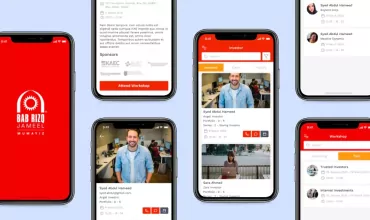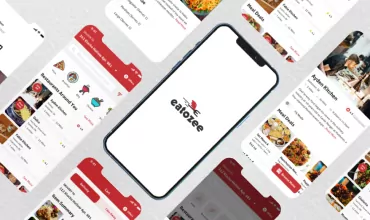Tips to Present Your IT Project in Front of The Buyers

Table of Contents
Putting yourself out there and pitching in for your products and services is a tough job. As an IT professional, how do you get clients to like your stuff? How do you manage to get a steady stream of clients to keep, convince and maintain a lasting relationship?

Sales pitching obviously involve several complexities like market studies, product research, research on potential clients, etc. But the crux of a successful sales-call boils down to the brand and your presentation.
Here’s how you can make an impressive presentation and rope in clients who are in for the long haul.
Building a brand: This topic does not directly fall under the presentation part of a sales call, but before you begin, it’s imperative to establish a brand image. People associate to brands like they would associate with other people. So each brand exudes a persona that is characteristic of it – in terms of character, trust, response and reliability. It’s these characteristics that potential and existing clients count on. So before you begin, make sure that people know what you’re all about, your expertise and your style.
- What you are: Focus on explaining what it is that you/ your brand do and how it benefits the customer. Work on making potential clients want to associate with you.
- Expertise: The best brands personify their expertise. This would mean doling out a lot of advice; marketing them and your brand’s perception on everything related to your niche area. You have to create a perception that you are good at your job!
- Your Modus operandi: That’s right; how you do it, makes a lot of difference. You should be approachable, motivating and unique as your brand.
Face-to-face: Being there in person always works better than a heavy email laden with ppts and figures, your clients, often CIOs, have a busy schedule and they would find it extremely difficult to go through your entire email. Always arrange for a meeting so that you can get instant feedbacks and pitch in the right tone.
Research: Support your sales force with adequate research on your prospective client. Go through details like their annual report, their company summaries, newspaper articles, websites, etc to gather a thorough understanding of the client’s business environment and their current challenges.
Customize Presentations and Demos: The research would help you tweak and optimize the presentation to display your products and services in the right light. The client would be able to relate to it easily and quickly figure out the direct benefits of working with you. Tailored demos to suit the client requirements are an added advantage. All these efforts help clients realize that you have understood their needs and that you can bring solid and reliable solutions to fit like a glove.
The Presentation: The Presentation itself requires adequate thought, planning and research before it is finalized. These slides would be making a lasting impression, so plan them carefully. Make it catchy and to-the-point, highlighting the benefits of your services. Emphasize why your services are exactly what the client needs.
- Introduction: Brief introduction, citing the problem to which your services are a solution. Motivate the audience by relating to their organization, and how the problem is a major hindrance.
- Body: Explain the solution; spell out the direct and indirect benefits. Detail the process, give figures and examples. Case studies and portfolio help (but keep it short). Have a purpose and conclusion for each slide; don’t overwhelm the audience with facts and figures.
- Conclusion: Reinstate your plan and its results. Highlight all the important points made in the previous sections for a coherent synopsis.
Play those hot buttons: A good sales force would know how to understand what people are motivated by and cleverly use it to their benefit. They would also know how to spin a situation to appease all the stakeholders involved. To be able to do the above it is essential to have a thorough understanding of the IT business and that of the client.
Client Support: Your work doesn’t end once the contract is signed. You need to stick around and make sure that the client is happy. A happy client equals to a good reference, and in business a good reference is worth a lot. It also opens up opportunities for cross selling, not to mention the added benefits when your contact person happens to switch organizations!
All in all, selling your IT project is not easy, but it’s simple. You just have to stick to these points and be good at what you do.



